Anthony Tzes
GAMap: Zero-Shot Object Goal Navigation with Multi-Scale Geometric-Affordance Guidance
Oct 31, 2024



Abstract:Zero-Shot Object Goal Navigation (ZS-OGN) enables robots or agents to navigate toward objects of unseen categories without object-specific training. Traditional approaches often leverage categorical semantic information for navigation guidance, which struggles when only objects are partially observed or detailed and functional representations of the environment are lacking. To resolve the above two issues, we propose \textit{Geometric-part and Affordance Maps} (GAMap), a novel method that integrates object parts and affordance attributes as navigation guidance. Our method includes a multi-scale scoring approach to capture geometric-part and affordance attributes of objects at different scales. Comprehensive experiments conducted on HM3D and Gibson benchmark datasets demonstrate improvements in Success Rate and Success weighted by Path Length, underscoring the efficacy of our geometric-part and affordance-guided navigation approach in enhancing robot autonomy and versatility, without any additional object-specific training or fine-tuning with the semantics of unseen objects and/or the locomotions of the robot.
Reliable Semantic Understanding for Real World Zero-shot Object Goal Navigation
Oct 29, 2024



Abstract:We introduce an innovative approach to advancing semantic understanding in zero-shot object goal navigation (ZS-OGN), enhancing the autonomy of robots in unfamiliar environments. Traditional reliance on labeled data has been a limitation for robotic adaptability, which we address by employing a dual-component framework that integrates a GLIP Vision Language Model for initial detection and an InstructionBLIP model for validation. This combination not only refines object and environmental recognition but also fortifies the semantic interpretation, pivotal for navigational decision-making. Our method, rigorously tested in both simulated and real-world settings, exhibits marked improvements in navigation precision and reliability.
Exploring the Reliability of Foundation Model-Based Frontier Selection in Zero-Shot Object Goal Navigation
Oct 28, 2024Abstract:In this paper, we present a novel method for reliable frontier selection in Zero-Shot Object Goal Navigation (ZS-OGN), enhancing robotic navigation systems with foundation models to improve commonsense reasoning in indoor environments. Our approach introduces a multi-expert decision framework to address the nonsensical or irrelevant reasoning often seen in foundation model-based systems. The method comprises two key components: Diversified Expert Frontier Analysis (DEFA) and Consensus Decision Making (CDM). DEFA utilizes three expert models: furniture arrangement, room type analysis, and visual scene reasoning, while CDM aggregates their outputs, prioritizing unanimous or majority consensus for more reliable decisions. Demonstrating state-of-the-art performance on the RoboTHOR and HM3D datasets, our method excels at navigating towards untrained objects or goals and outperforms various baselines, showcasing its adaptability to dynamic real-world conditions and superior generalization capabilities.
RCM-Constrained Manipulator Trajectory Tracking Using Differential Kinematics Control
Sep 09, 2024Abstract:This paper proposes an approach for controlling surgical robotic systems, while complying with the Remote Center of Motion (RCM) constraint in Robot-Assisted Minimally Invasive Surgery (RA-MIS). In this approach, the RCM-constraint is upheld algorithmically, providing flexibility in the positioning of the insertion point and enabling compatibility with a wide range of general-purpose robots. The paper further investigates the impact of the tool's insertion ratio on the RCM-error, and introduces a manipulability index of the robot which considers the RCM-error that it is used to find a starting configuration. To accurately evaluate the proposed method's trajectory tracking within an RCM-constrained environment, an electromagnetic tracking system is employed. The results demonstrate the effectiveness of the proposed method in addressing the RCM constraint problem in RA-MIS.
* 6 pages, 7 figures. Published in the 21st International Conference on Advanced Robotics (ICAR 2023)
Robotic Shepherding in Cluttered and Unknown Environments using Control Barrier Functions
Jul 22, 2024Abstract:This paper introduces a novel control methodology designed to guide a collective of robotic-sheep in a cluttered and unknown environment using robotic-dogs. The dog-agents continuously scan the environment and compute a safe trajectory to guide the sheep to their final destination. The proposed optimization-based controller guarantees that the sheep reside within a desired distance from the reference trajectory through the use of Control Barrier Functions (CBF). Additional CBF constraints are employed simultaneously to ensure inter-agent and obstacle collision avoidance. The efficacy of the proposed approach is rigorously tested in simulation, which demonstrates the successful herding of the robotic-sheep within complex and cluttered environments.
Efficient and Distributed Large-Scale 3D Map Registration using Tomographic Features
Jun 27, 2024Abstract:A robust, resource-efficient, distributed, and minimally parameterized 3D map matching and merging algorithm is proposed. The suggested algorithm utilizes tomographic features from 2D projections of horizontal cross-sections of gravity-aligned local maps, and matches these projection slices at all possible height differences, enabling the estimation of four degrees of freedom in an efficient and parallelizable manner. The advocated algorithm improves state-of-the-art feature extraction and registration pipelines by an order of magnitude in memory use and execution time. Experimental studies are offered to investigate the efficiency of this 3D map merging scheme.
Aerial Manipulator Force Control Using Control Barrier Functions
Sep 14, 2023Abstract:This article studies the problem of applying normal forces on a surface, using an underactuated aerial vehicle equipped with a dexterous robotic arm. A force-motion high-level controller is designed based on a Lyapunov function encompassing alignment and exerted force errors. This controller is coupled with a Control Barrier Function constraint under an optimization scheme using Quadratic Programming. This aims to enforce a prescribed relationship between the approaching motion for the end-effector and its alignment with the surface, thus ensuring safe operation. An adaptive low-level controller is devised for the aerial vehicle, capable of tracking velocity commands generated by the high-level controller. Simulations are presented to demonstrate the force exertion stability and safety of the controller in cases of large disturbances.
Safe Navigation and Obstacle Avoidance Using Differentiable Optimization Based Control Barrier Functions
Apr 17, 2023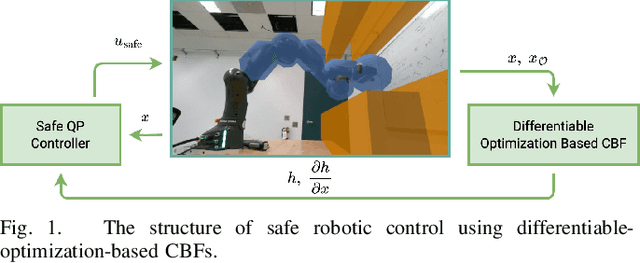

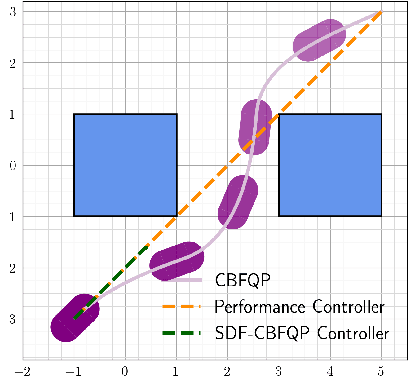

Abstract:Control barrier functions (CBFs) have been widely applied to safety-critical robotic applications. However, the construction of control barrier functions for robotic systems remains a challenging task. Recently, collision detection using differentiable optimization has provided a way to compute the minimum uniform scaling factor that results in an intersection between two convex shapes and to also compute the Jacobian of the scaling factor. In this paper, we propose a framework that uses this scaling factor, with an offset, to systematically define a CBF for obstacle avoidance tasks. We provide a theoretical analysis that proves the continuity of the proposed CBF. Empirically, we show that the proposed CBF is continuously differentiable, and the resulting optimal control problem is computationally efficient, which makes it applicable for real-time robotic control. We validate our approach, first using a 2D mobile robot example, then on the Franka-Emika Research~3 (FR3) robot manipulator both in simulation and experiment.
ROIFormer: Semantic-Aware Region of Interest Transformer for Efficient Self-Supervised Monocular Depth Estimation
Dec 16, 2022Abstract:The exploration of mutual-benefit cross-domains has shown great potential toward accurate self-supervised depth estimation. In this work, we revisit feature fusion between depth and semantic information and propose an efficient local adaptive attention method for geometric aware representation enhancement. Instead of building global connections or deforming attention across the feature space without restraint, we bound the spatial interaction within a learnable region of interest. In particular, we leverage geometric cues from semantic information to learn local adaptive bounding boxes to guide unsupervised feature aggregation. The local areas preclude most irrelevant reference points from attention space, yielding more selective feature learning and faster convergence. We naturally extend the paradigm into a multi-head and hierarchic way to enable the information distillation in different semantic levels and improve the feature discriminative ability for fine-grained depth estimation. Extensive experiments on the KITTI dataset show that our proposed method establishes a new state-of-the-art in self-supervised monocular depth estimation task, demonstrating the effectiveness of our approach over former Transformer variants.
1st Workshop on Maritime Computer Vision 2023: Challenge Results
Nov 28, 2022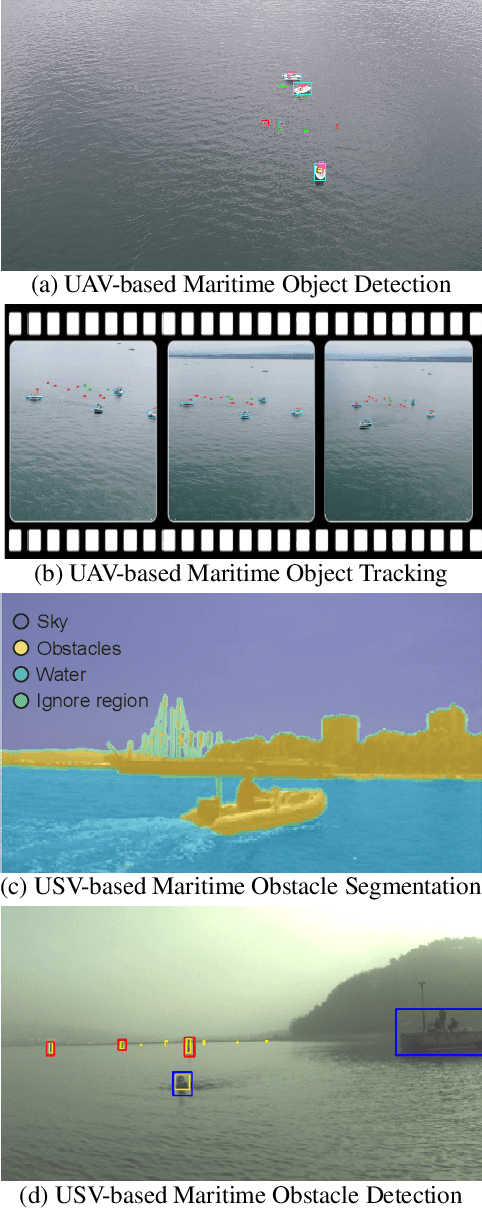
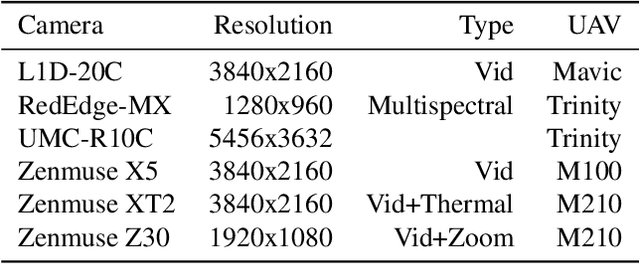
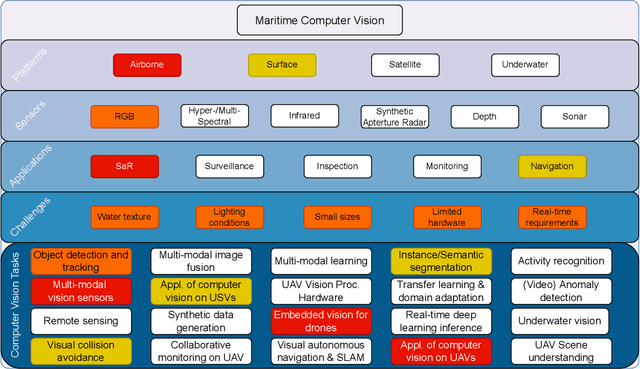
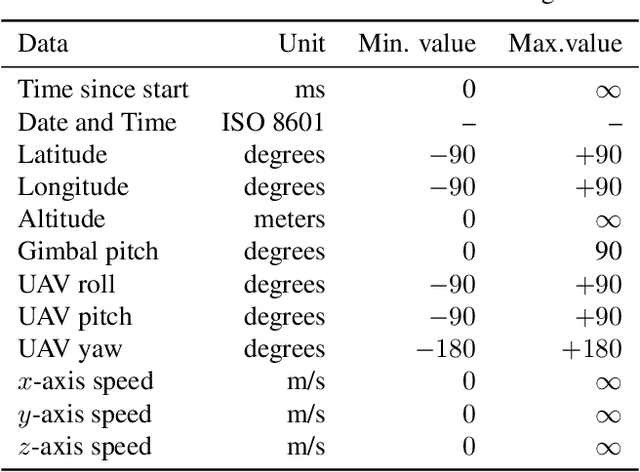
Abstract:The 1$^{\text{st}}$ Workshop on Maritime Computer Vision (MaCVi) 2023 focused on maritime computer vision for Unmanned Aerial Vehicles (UAV) and Unmanned Surface Vehicle (USV), and organized several subchallenges in this domain: (i) UAV-based Maritime Object Detection, (ii) UAV-based Maritime Object Tracking, (iii) USV-based Maritime Obstacle Segmentation and (iv) USV-based Maritime Obstacle Detection. The subchallenges were based on the SeaDronesSee and MODS benchmarks. This report summarizes the main findings of the individual subchallenges and introduces a new benchmark, called SeaDronesSee Object Detection v2, which extends the previous benchmark by including more classes and footage. We provide statistical and qualitative analyses, and assess trends in the best-performing methodologies of over 130 submissions. The methods are summarized in the appendix. The datasets, evaluation code and the leaderboard are publicly available at https://seadronessee.cs.uni-tuebingen.de/macvi.
 Add to Chrome
Add to Chrome Add to Firefox
Add to Firefox Add to Edge
Add to Edge